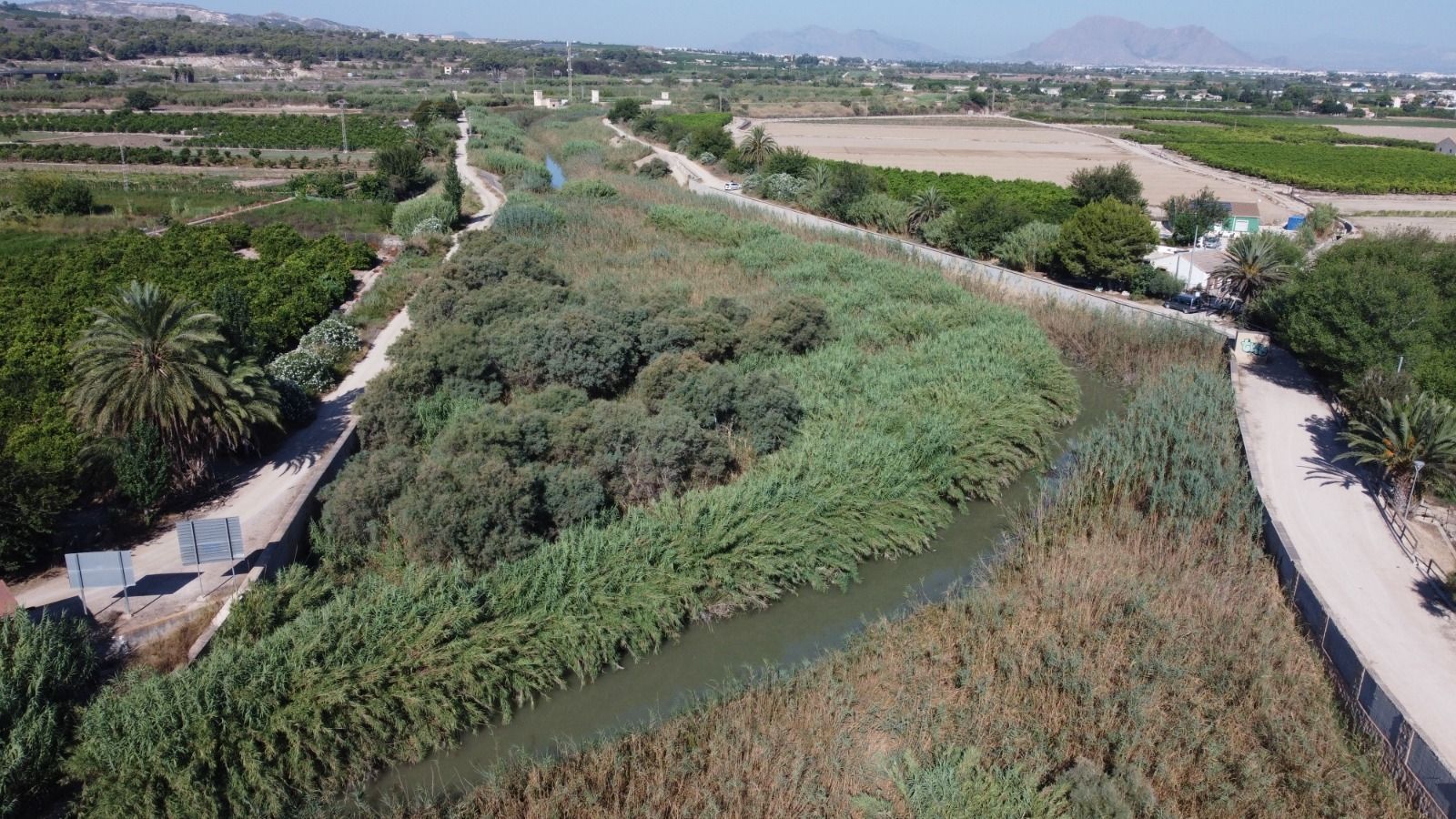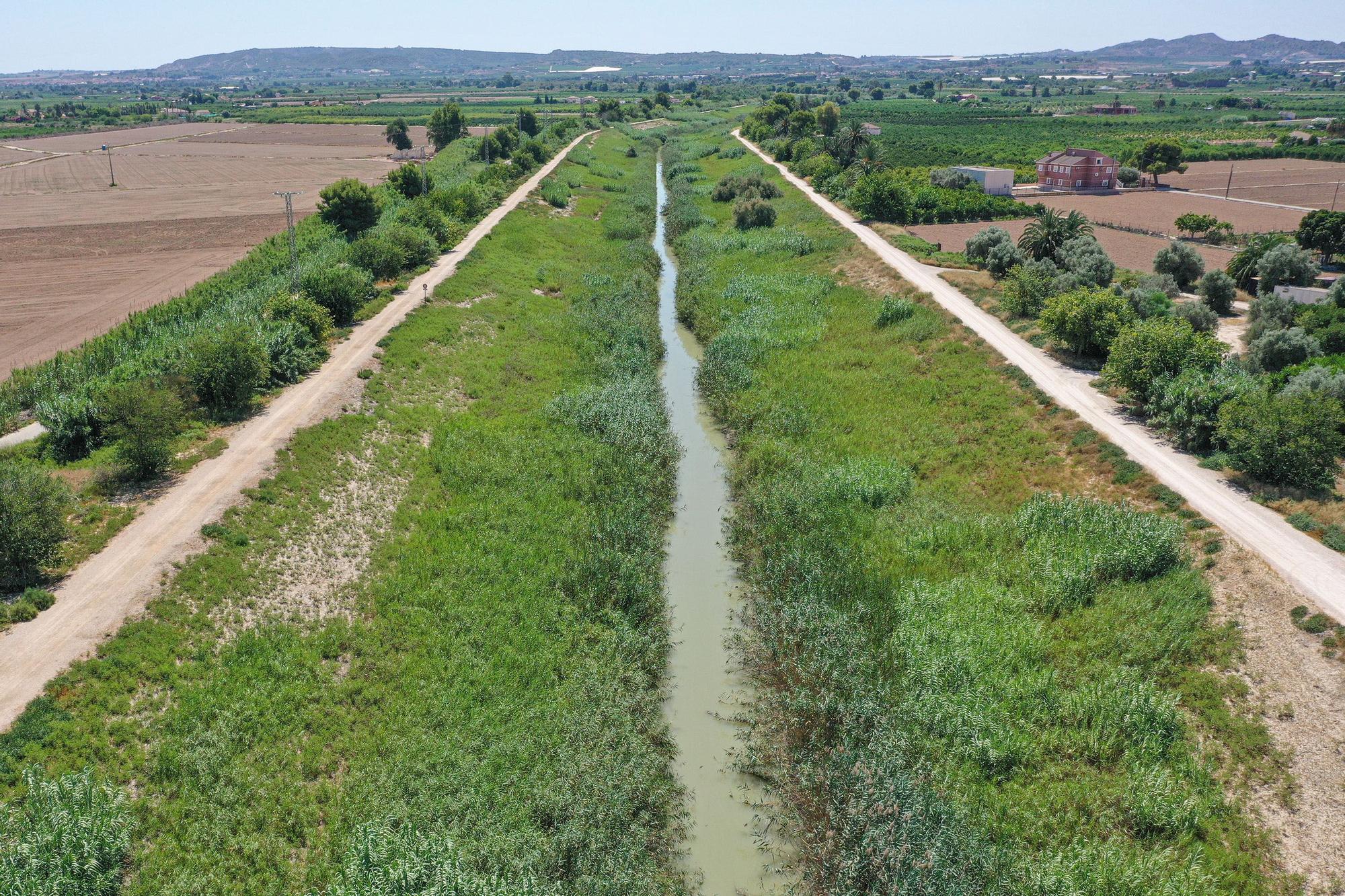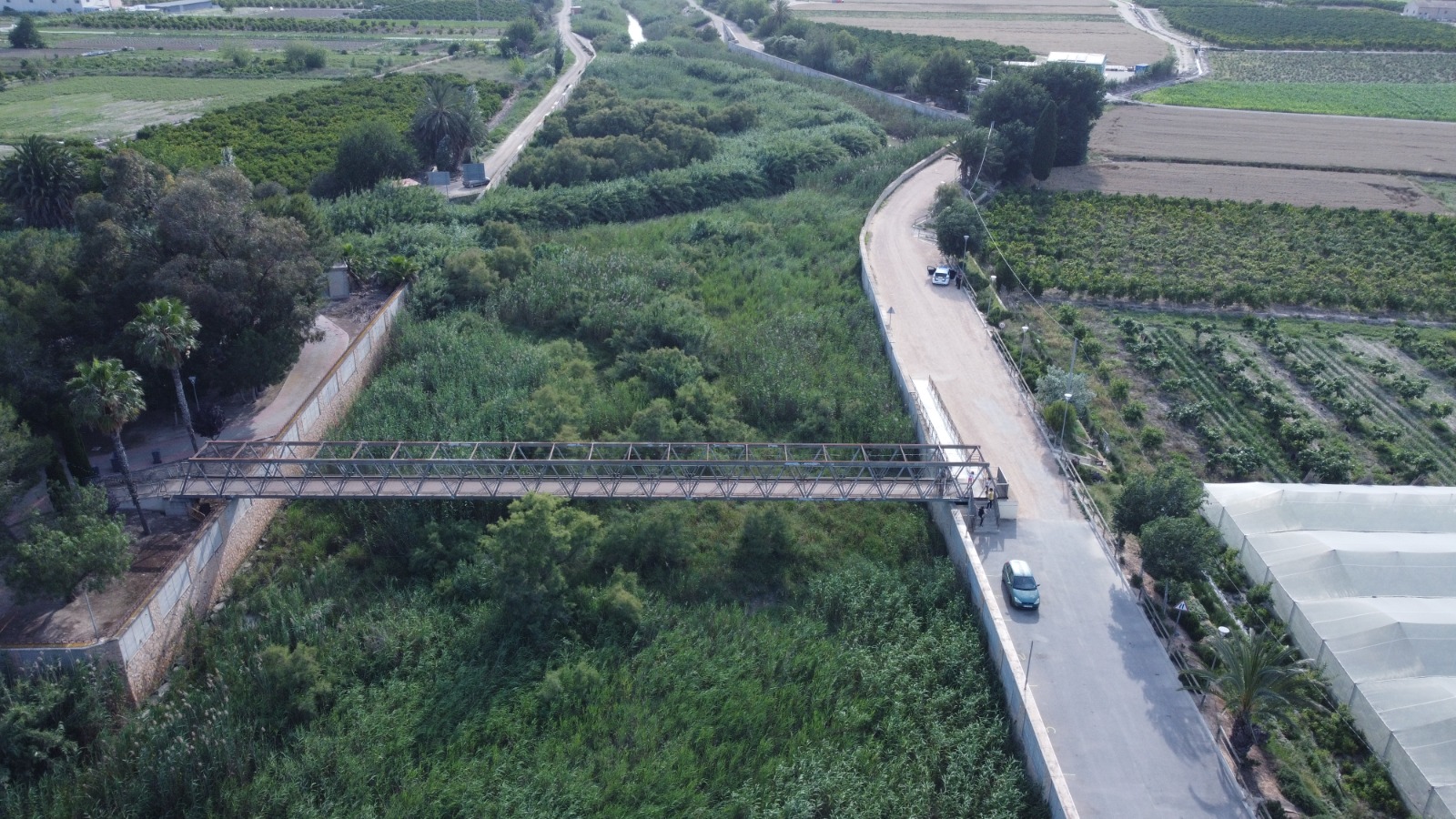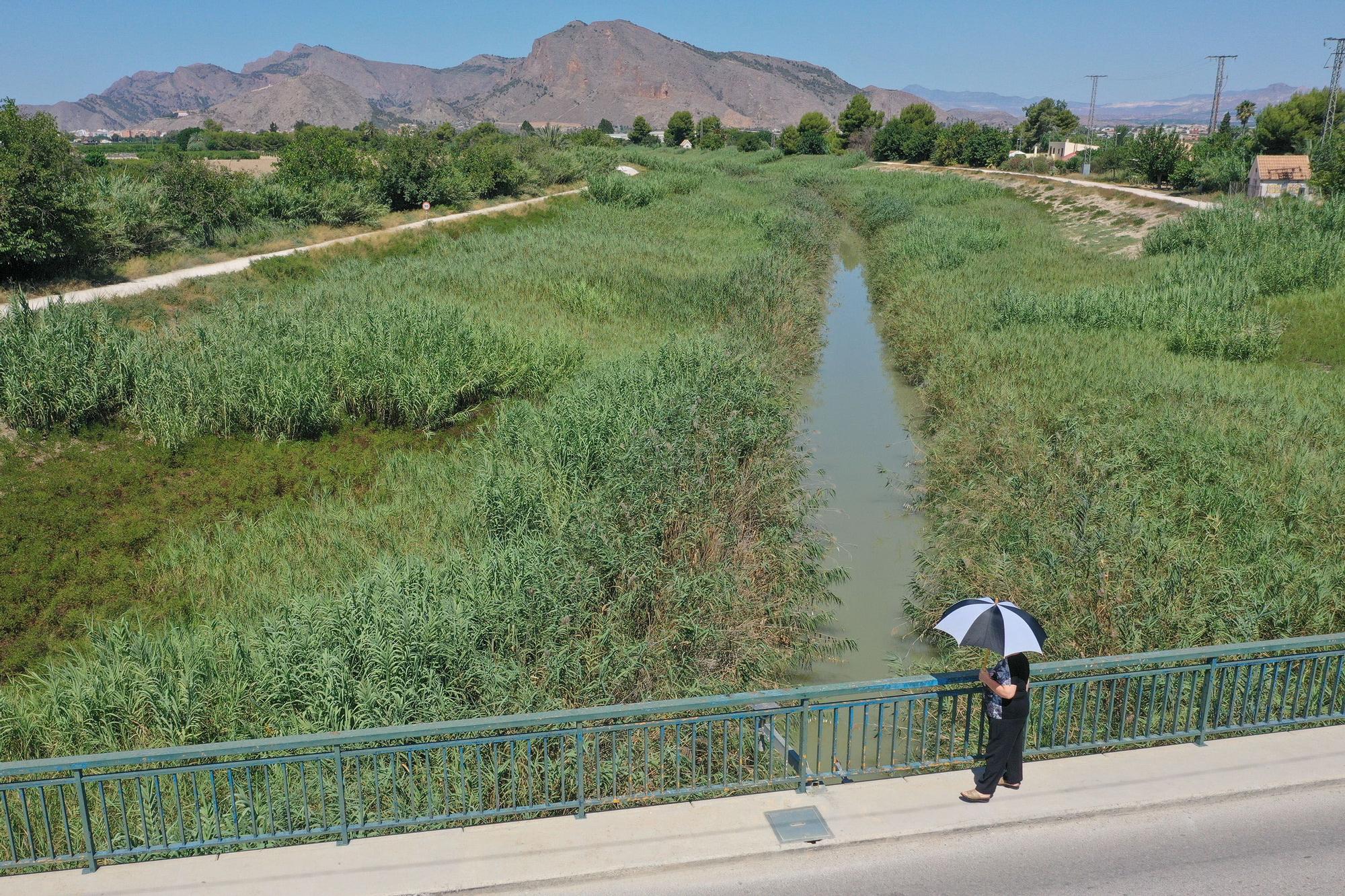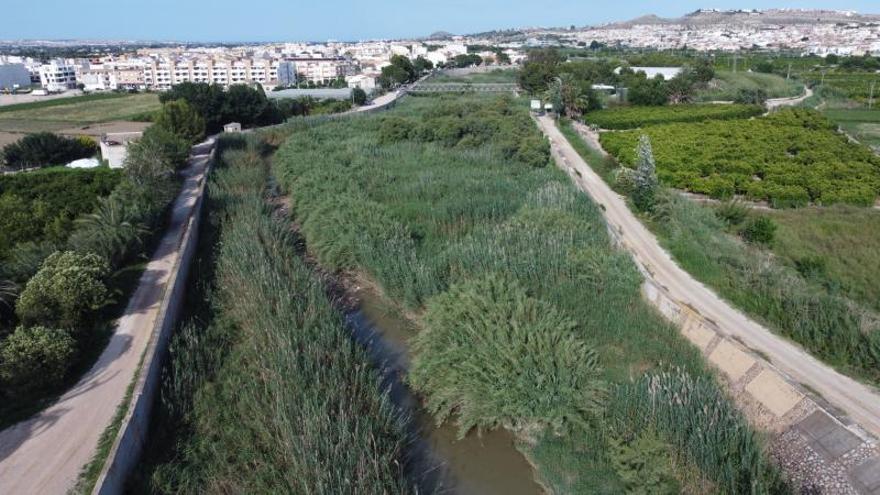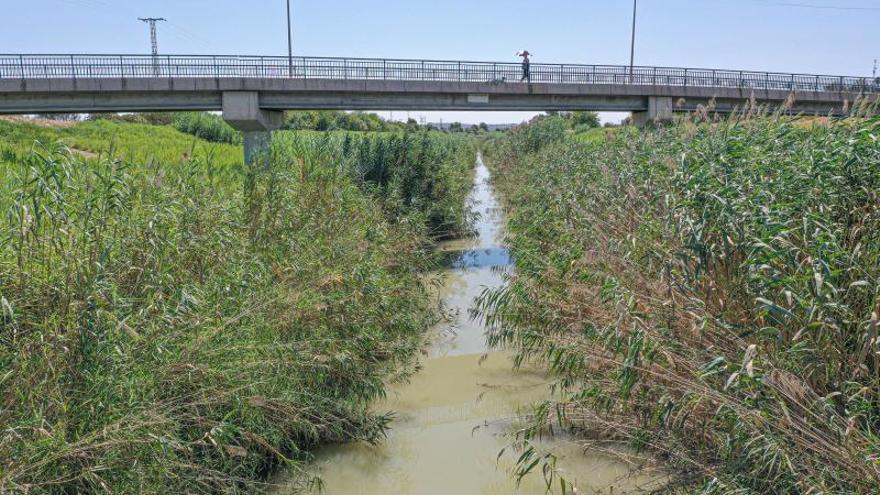This coming week we will enter the month of August and despite promise after promise by the Segura Hydrographic Confederation (CHS), many stretches of the Rio Segura are still completely overgrown with reeds and vegetation which, in the event of a DANA repeat, will surely bring the Vega Baja to it’s knees as it did previously in September 2019.
On that occasion the episode of the Isolated Depression at High Levels (DANA), better known as cold drop, completely devastated the south of Alicante and the Region of Murcia and was considered to be the natural disaster with the highest economic cost in the recent history of Spain. Costing 1,319 million euros it is something that we cannot contemplate happening again.
But the images provided by @inf_vegabaja tell their own story. They are repeated time and again, especially in the stretch of the river between Orihuela and Rojales, in Molins, Jacarilla, Benejúzar, Algorfa, Almoradí, Formentera del Segura, Benijófar, upstream of Rojales, and to a lesser extent, upstream of the town of Orihuela and at the mouth of Guardamar where the CHS has at least taken some action in recent months.
As many residents of the Vega Baja look out on the banks of the Segura, all they can see is a thick blanket of reeds that covers the riverbed. Just a thread of turbid water recycled from the treatment plants and mixed with the contribution of the azarbes, the ditches that channel the excess water from the irrigation systems, of the traditional garden can be seen between the impenetrable wall of Arundo donax, a tall perennial cane, and an invasive plant species that is very difficult to eradicate.
Although some clearance work is currently going on the clearing of the reeds has complications as the CHS is cutting them down but failing to remove much of the plant debris. This will mean that if the flow rises due to the intensity of the rains, the weeds will plug a good part of the bank downstream. In addition, the reeds grow back very quickly. Interventions to try to restore riparian vegetation, the interface between land and the river, such as taray, in order to regain its space in the riverbed, are expensive and require a radical eradication of the can.
Let’s not also forget the many millions of euros allocated by the Consell to each of the local council’s directly, through the Vega Renhace plan, to combat the problems in their own municipalities in regard to sustainable urban drainage systems. This should have included cleaning by extracting elements such as reeds, mud, stones or sand from the mouth of rivers, canals and their surroundings.
While residents continue to protect themselves from the hot sun in one of the hottest Julys that we can remember in the orchard of Bajo Segura, there is a constant bombardment of information about the high temperature of the Mediterranean Sea, which is already close to 30 degrees. This is a temperature that we would only expect to reach in mid-August, but even now we are being warned that it is a the climate emergency with the current conditions raising the risk of a new episode of torrential rains.
With fear of the possibility of a new DANA, like the one suffered in September 2019, known as the Santa María flood, the incident devastated the traditional orchard and left up to 500 litres of rain per square metre, in some areas of the Segura basin.
However, we are also told that it is unlikely to occur with the same intensity – previous studies indicate that it happens once every 500 years – but the fear still remains.
Sources of the Segura Hydrographic Confederation (CHS) though, maintain that there is a vegetation clearing plan in place in the channel, and that it will be maintained in the coming weeks.
The work to clear the reed beds in the Orihuela-Benejúzar section and the Rojales-Guardamar section is a priority. But they added that the heavy machinery necessary to clear the vegetation cannot get into the channel with the current temperatures, above 40 degrees, to avoid the risk of fire.
